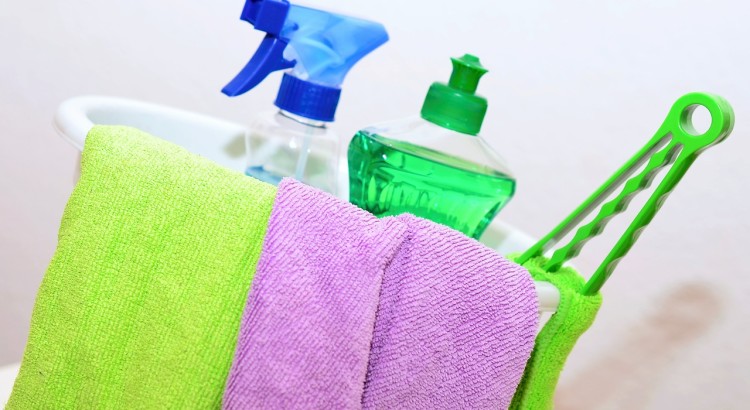I saw this very disturbing article this afternoon: Boy, 7, suffers chemical burns using school bathroom. 2 weeks ago, the boy sat on a toilet seat which had been cleaned with a harsh disinfectant, in his school bathroom. Later in the day, he noticed a rash resembling a sunburn on his legs. Then shortly after, the skin on his legs began to “ooze and bubble”. His mother says he missed nearly 2 weeks of school and was in so much pain he was unable to wear pants for 11 days. Other sources indicate additional children were impacted to varying degrees. Based on the description of what happened to this boy’s skin, how quickly it occurred, and how long he suffered, I wondered right away if the cleaning product contained detergents. I always have a heavy burden in my heart when I see news like this, because detergents are a largely unrecognized causation of skin rashes and eczema, and most who are aware are largely resistant to the concept that detergents, which are ubiquitous in our modern environments, could affect all of us negatively in some way, even if only “mildly” by causing dry skin and not severely as causing eczema or making asthma worse as for some. I almost hoped that detergents weren’t the culprit in this case, so I could escape that familiar burden to blog about it, post to Facebook about it, and tell everyone I could about it … so I wouldn’t perpetuate the notion that I’m on that “crazy detergent arc again” from those that don’t fully understand or simply don’t care. I and my children have been adversely affected by detergents, and found a solution for the ensuing relentless eczema, dry skin, and even reduced the severity of my asthma — things we’ve all been told aren’t supposed to be possible. So when I see evidence of someone suffering, all I want to do is to bring awareness about why, and conviction and thought about the trade-offs we’ve made in this synthetic-chemical-reliant world we now live in.
No such luck for my hope the culprit in this case isn’t detergent. The mother in the news article says the school provided her a MSDS (material safety data sheet) for the cleaning product in question, a product named “ED Everyday Disinfectant”. I looked it up. And on the data sheet I located, I found that the cleaner is comprised of 15% didecyl dimethyl ammonium chloride. This compound is what is known as a cationic surfactant (a detergent), belonging to the class of chemicals known as quaternary ammonium salts (see its SAAPedia entry here). Quaternary ammonium salts, or “quats” as they are commonly known, are a powerful chemical that are often used as sanitizers because they are antimicrobial (bactericidal and fungicidal). They are commonly used for food-surface sanitization at 100-400ppm which is equivalent to 0.01%-0.04% concentration. They function as detergents when present in high enough concentrations (see this paper). I’d say 15%, which is 1000x as strong as what is used to sanitize food prep surfaces, is a high enough concentration to qualify the quat in the “Everyday Disinfectant” cleaning product that was used on the toilet seat as a detergent!
The severity of this boy’s symptoms weren’t a surprise to me. They mirrored the symptoms my own children and others who suffer from eczema caused by environmental detergents, have exhibited. The red rash, burning, bubbling, oozing skin and then broken/scabbing skin described in the news article spoke to me immediately. The sad truth is that detergents really are everywhere. In fact, earlier this afternoon before seeing this news article, my children and I were at the grocery store and I saw a spray bottle labelled “Sanitizer-Quat” at the cashier, ostensibly used to sanitize the conveyer belt surface at checkout. I whispered to my son “that bottle contains ‘quats’, a very strong detergent — so don’t touch the belt!” Because detergents are everywhere, there is a great need to raise awareness that they impact all of us in a negative way because they increase skin and membrane permeability. If this was more readily known, and detergents’ causative impact to skin issues, eczema and potentially other allergic manifestations was more readily accepted through intentionally directed research validation, it’s possible that detergents would be used with greater care, and much more sparingly. The mother of the boy who suffered “burns” from the disinfectant cleaner used at his school went to the media because she wanted to make sure something similar didn’t happen to other kids. “It’d be a shame if it happened to anybody’s child,” she says in the article. I couldn’t agree more.
